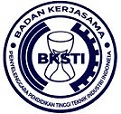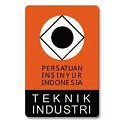Perbaikan Proses Bisnis menggunakan Metode Business Process Improvement pada Divisi Kasir Supermarket X
Abstract
Penelitian yang dilakukan di Supermarket X ini adalah mengenai masalah perbaikan proses bisnis pada Divisi Kasir. Divisi Kasir Supermarket X memiliki 4 proses bisnis, antara lain perhitungan uang modal kembalian, transaksi tunai dan non tunai, penyetoran hasil dan bukti transaksi, dan pembukuan laporan keuangan. Penerapan proses bisnis ini terdapat kendala seperti waktu transaksi yang lama dan kesalahan dalam memasukkan data sehingga menghambat pelaksanaan proses bisnis berikutnya. Untuk itu dibutuhkan perbaikan agar dapat meminimasi waktu dan kesalahan proses. Perbaikan dilakukan dengan analisis dan pemodelan proses bisnis sehingga menghasilkan saran berupa rekomendasi perbaikan proses bisnis agar proses yang diterapkan lebih efektif dan efisien. Metode yang digunakan pada penelitian adalah metode Business Process Improvement dari fase 1 (organizing for improvement) hingga fase 3 (streamlining) dengan pemodelan proses bisnis menggunakan Bussiness Process and Model Notation. Rekomendasi proses bisnis menghasilkan simulasi waktu yang lebih singkat dengan selisih rata-rata waktu sebesar 2 jam 4 menit 30 detik, sehingga dapat disimpulkan bahwa proses bisnis rekomendasi lebih efisien dibandingkan proses bisnis yang saat ini berjalan di Divisi Kasir Supermarket X.
Kata kunci: kasir, supermarket, Business Process Improvement, streamlining. Bussiness Process and Model Notation.
Full Text:
PDFReferences
M. Hammer and J. Champy, Reengineering the Corporation: “A Manifesto For Business Revolution.” New York: Harper Collins Publisher, 1993.
Keputusan Menteri Kesehatan Republik Indonesia Nomor Hk.01.07/Menkes/328/2020 Tentang Panduan Pencegahan Dan Pengendalian Corona Virus Disease 2019 (Covid-19) Di Tempat Kerja Perkantoran Dan Industri.
“Wawan Mas’udi, Poppy S. Winanti - Tata Kelola Penanganan COVID-19 di Indonesia_ Kajian Awal-UGM Press (2020)”.
H. J. (H. J. Harrington, Business process improvement : the breakthrough strategy for total quality, productivity, and competitiveness. McGraw-Hill, 1991.
M. Weske, Business Process Management: Concepts, Languages, Architectures, Third. Potsdam: Springer, 2019.
T. D. Martin and J. T. Bell, “New Horizons in Standardized Work: Techniques for Manufacturing and Business Process Improvement,” 2011.
A. Kopp, “A Method for Business Process Model Analysis and Improvement.”
I. Mukhlash, W. N. Rumana, D. Adzkiya, and R. Sarno, “Business process improvement of production systems using coloured petri nets,” Bulletin of Electrical Engineering and Informatics, vol. 7, no. 1, pp. 102–112, Mar. 2018, doi: 10.11591/eei.v7i1.845.
J. M. Casebolt, A. Jbara, and D. Dori, “Business process improvement using Object-Process Methodology,” Systems Engineering, vol. 23, no. 1, pp. 36–48, Jan. 2020, doi: 10.1002/sys.21499.
N. Missaoui and S. Ayachi Ghannouchi, “Pattern-based approaches for business process improvement: A literature review,” in Communications in Computer and Information Science, 2019, vol. 931, pp. 390–400. doi: 10.1007/978-981-13-5907-1_42.
“Business Process Change A Business Process Management Guide for Managers and Process Professionals Fourth Edition.” [Online]. Available: www.BPTrends.com
F. Johannsen, “Towards Tool-Supported Situational Roadmap Development for Business Process Improvement,” in WI2020 Zentrale Tracks, GITO Verlag, 2020, pp. 931–937. doi: 10.30844/wi_2020_i5-johannsen.
L. J. Koskela, “Application of the New Production Philosophy to Construction Improvement of Dimensional Tolerance Management in Construction View project State of the art in tolerance management View project,” 2018. [Online]. Available: https://www.researchgate.net/publication/243781224
R. S. Aguilar-Savén, “Business process modelling: Review and framework,” Int J Prod Econ, vol. 90, no. 2, pp. 129–149, Jul. 2004, doi: 10.1016/S0925-5273(03)00102-6.
V. Weerakkody, M. Janssen, and R. El-Haddadeh, “The resurgence of business process re-engineering in public sector transformation efforts: exploring the systemic challenges and unintended consequences,” Information Systems and e-Business Management, vol. 19, no. 3, pp. 993–1014, Sep. 2021, doi: 10.1007/s10257-021-00527-2.
O. Gjoni, “Bizagi Process Management Suite as an Application of the Model Driven Architecture Approach for Developing Information Systems,” Academic Journal of Interdisciplinary Studies, Nov. 2014, doi: 10.5901/ajis.2014.v3n6p475.
S. A. White and Derek. Miers, BPMN modeling and reference guide : understanding and using BPMN : develop rigorous yet understandable graphical representations of business processes. Future Strategies Inc, 2008.
O. Gjoni, “Comparison of two model driven architecture approaches for automating business processes, MOSKitt framework and Bizagi process management suite,” Mediterr J Soc Sci, vol. 6, no. 2, pp. 615–625, Mar. 2015, doi: 10.5901/mjss.2015.v6n2p615.
F. Sulistyowati, N. U. Hasanah, P. I. Komunikasi, S. " Apmd, and " Yogyakarta, “Strategi Komunikasi Pemerintah Indonesia dalam Penanganan COVID-19 pada Majalah TEMPO Edisi Maret-Juli 2020”.
D. Tuwu, B. S. Laksmono, A. Huraerah, and L. Harjudin, “Dinamika Kebijakan Penanganan Pandemi COVID-19 Dalam Perspektif Kesejahteraan Sosial,” Sosio Konsepsia, vol. 10, no. 2, Apr. 2021, doi: 10.33007/ska.v10i2.2158.
J. R. Evans and W. M. Lindsay, “An Introduction to Six Sigma & Process Improvement,” 2015. [Online]. Available: www.cengagebrain.com
E. Diaz and S. Rueda, “Generation of user interfaces from Business Process Model Notation (BPMN),” in Proceedings of the ACM SIGCHI Symposium on Engineering Interactive Computing Systems, EICS 2019, Jun. 2019. doi: 10.1145/3319499.3328242.
M. Chinosi and A. Trombetta, “BPMN: An introduction to the standard,” Comput Stand Interfaces, vol. 34, no. 1, pp. 124–134, Jan. 2012, doi: 10.1016/j.csi.2011.06.002.
F. Corradini, F. Fornari, A. Polini, B. Re, F. Tiezzi, and A. Vandin, “A formal approach for the analysis of BPMN collaboration models,” Journal of Systems and Software, vol. 180, Oct. 2021, doi: 10.1016/j.jss.2021.111007.
D. I. Genady, “Pengaruh kemudahan, kemanfaatan, dan promosi uang elektronik terhadap keputusan penggunaan uang elektronik di masyarakat (studi kasus di Provinsi DKI Jakarta),” UIN Syarif Hidayatullah Jakarta, Jakarta, 2018.
DOI: http://dx.doi.org/10.24014/jti.v8i2.20114
Refbacks
- There are currently no refbacks.
Copyright (c) 2022 Intan Rahmatillah

This work is licensed under a Creative Commons Attribution-NonCommercial-ShareAlike 4.0 International License.
Jurnal Teknik Industri
P-ISSN 2460-898X | E-ISSN 2714-6235
Published by:
Industrial Engineering Department
Universitas Islam Negeri Sultan Syarif Kasim Riau, Indonesia
Office Address:
H.R. Soebrantas KM 15.5, Tampan, Pekanbaru, Riau, Indonesia 28293
email: jti.fst@uin-suska.ac.id
Indexed by:
JTI : Jurnal Teknik Industri under a Creative Commons Attribution-NonCommercial-ShareAlike 4.0 International License.

















